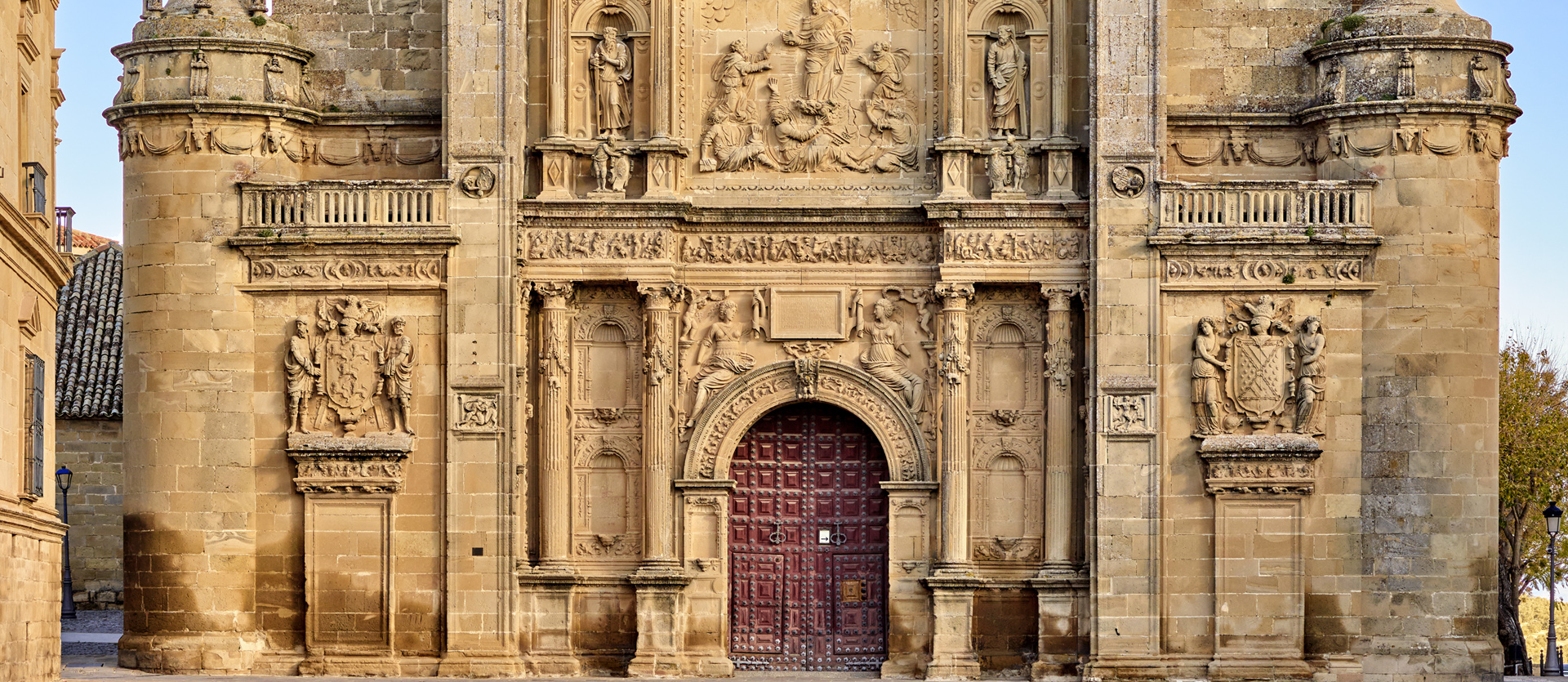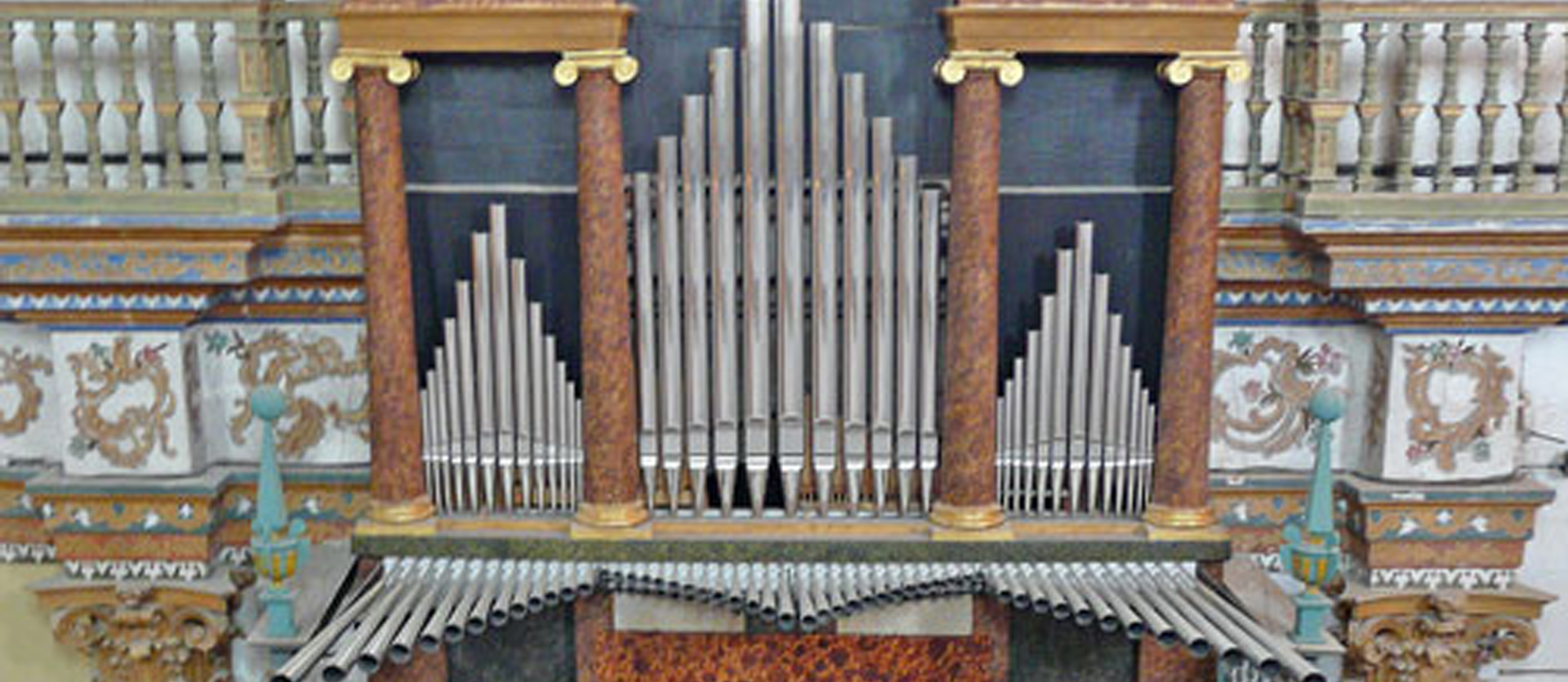The Sixes of the Saviour
The recovery of a musical tradition
Since Christmas 2008, a choir of six children has been singing at all the Sunday masses and main functions held in the Chapel of the Saviour. This act re-established a musical tradition that dates back to the very conception of this chapel, the pantheon of Francisco de los Cobos, the universal secretary of Emperor Charles V. This action was possible thanks to the previous restoration of the chapel's eighteenth-century organ and has been succeeded by the integration into the choir of the former boy sixes who stopped singing in the seventies, so that today this choir is a mixed group of white and adult voices that evokes the musical chapel created by the widow of Francisco de los Cobos, María de Mendoza, in 1568.
Music has been present in the Chapel of the Saviour from the very moment of its conception, since it was already present in the first conditions that Diego de Siloé gave for the construction of its nave and main chapel, in 1536, you can read that the entablature that encircles the entire church was to serve as the "of platform where it will walk along the top of the whole of the main chapel and the nave of the church, and this may also be useful for organ musyca or high menestril musyca". Shortly afterwards, its founder, Francisco de los Cobos, imposed on the chaplains as a reference in the organisation of the chant, the same royal foundation that Siloé had used for the design of the façade, as he tells them that must sing "in the same order and manner as it is said and sung in the Royal Chapel of the Catholic Kings of Granada".
Gines de la Jara Navarrete in his History of Úbeda in its documents (T. V, p. 68) states that already in 1559, after its consecration and the transfer of the Blessed Sacrament from the first project of the family pantheon, the chapel of the Conception of Saint Thomas, the Chapel of the Saviour was endowed with singers and musicians.
However, the definitive organisation of the music chapel came about with the new constitutions granted to the institution by its patron, María de Mendoza, widow of the Comendador Mayor, in 1568. In them it is established that In addition to the organist and the six choirboys who already existed, the musical chapel would be composed of five other chaplaincies. The chapel was to be occupied by a chapel master and four singers with the voice of a treble, alto, tenor and bass (M.A. Marín López. Nothing was said in them about the ministriles, as it was customary for them not to be part of the clergy, although they acted together with the chaplains. The patron stipulated the way in which vacancies were to be filled by sending "...".edicts to the cathedrals of Granada, Toledo, Jaén and Seville and to others, and once the candidates have come, they will show their ability and the senior chaplain will examine them and choose those who are most avile and have the best character and customs.". Finally, although the reference to Granada is maintained, the possible models are extended: "...".And we also order that the organist be obliged to play major doubles and minor doubles on Sundays and the usual days [...] as is customary in the Royal Chapel of Granada and the main church of Jaén and other cathedrals."
The Capilla Musical thus formed, as well as singing on the occasions foreseen in the constitutions, also performed on very extraordinary occasions, although we have only heard of a few of them: at the declaration of San Juan de la Cruz as the second Patron Saint of Úbeda in 1675; at the proclamation of Luis I in 1724; at Corpus Christi in 1744; at the proclamation of Fernando VI as King of Spain in 1746; during the proclamation of Carlos III in 1759; at the births of the infants Carlota Joaquina, María Amalia and Carlos Eusebio between 1775 and 1779; at the proclamation of Carlos IV in 1789. More recently, a smaller musical chapel made up of six children performed for Pope Paul VI in 1974, an act which in a certain way constituted the swan song of this tradition so closely linked to the history of the Chapel of the Saviour.
Although we know very little about the primitive instrument that replaced the present eighteenth-century organ, we do know that the organ was the centrepiece of the musical chapel. That is why, in Following the completion of the restoration of this instrument in 2008, carried out under the guidance of Rodrigo Madrid Gómez, a former child seise and professor of harpsichord at the Conservatorio Superior de Música de Valencia, the Foundation set out to restore the musical tradition linked to the Chapel of the Saviour, recovering the choir of white voices which, as has been said, had sounded there until the 1970s. In this way, since Christmas 2008, a choir of six children solemnises Sunday masses. and those of the main functions held in the Chapel of the Saviour.
Subsequently, in 2014, thanks to a reunion of former boy sixes, those who had sung for Paul VI, among them The idea arose of recovering and recreating the musical chapel as it was formed in the Renaissance, with the white voices of the sixes and the bass voices of those who were sixes in their childhood. Thus, today the musical chapel "The sixes of the Saviour"is a mixed choral formation, composed of white voices (boys and girls) and adults.The choir, led by the maestro de capilla María Jesús García Sánchez and the organist Emilio José Alejo Martínez, specialises in liturgical repertoire ranging from traditional music to classical and renaissance repertoire. If the white voices perform in all Sunday masses, the complete group performs at least once a month in Sunday masses and has exceptionally performed in charity festivals, in Christmas concerts and Renaissance Festivals in Úbeda, in Eucharistic celebrations in the cathedrals of Córdoba and Guadix, in the FEMAUB 2018 and 2019, in the Vandelvira Festival since 2020 and recently in the church of the Sacred Heart in Rome.



